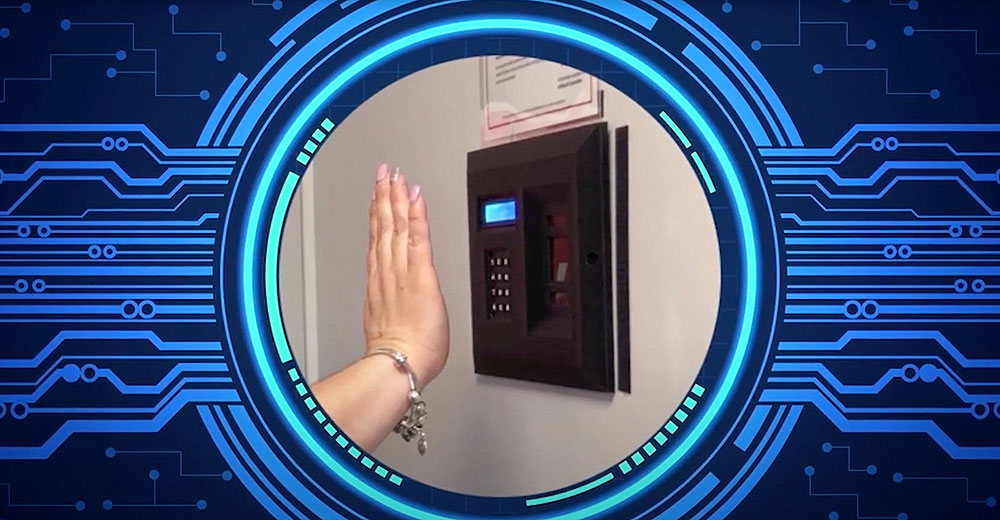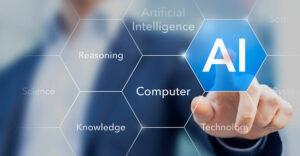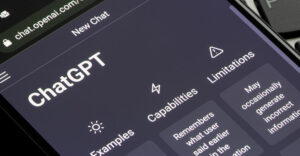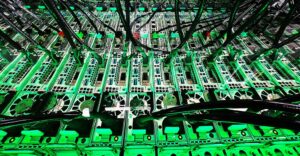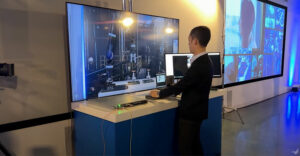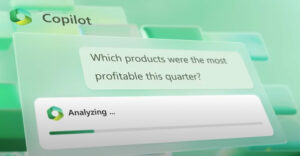The widespread belief is that finger, face, and voice authentication are the epitome of security. But those technologies are not as safe as we think, according to nVIAsoft officials, who point out that conventional biometric systems like face, voice, and fingerprint recognition have easily exploitable security loopholes.
The New York-based startup is developing a revolutionary method with patented contactless hand biometric sensors and a proprietary software solution. It is working to eliminate such exploits with new hands-up technology.
The company is developing a new way of authenticating biometrics — called Verihand — as the first contactless biometric reader that maps the complex vein structure of the entire hand to generate a unique, encrypted digital ID that is virtually impossible to hack.
Essentially, Verihand makes a user’s entire hand the password. This contactless biometric reader maps the complex vein structure of a person’s entire hand to generate a unique, encrypted digital ID that is virtually impossible to hack. Verihand’s instant, non-invasive, and hygienic scanning process is more secure and reliable than traditional methods, according to product developers.
In-Demand Tech
NVIAsoft envisions its authentication technology will be a global standard and one of the industry’s leading technological advancements for securing identity in the next five years. The company also anticipates great opportunity for expansion into the cloud computing and mobile industry for single sign on (SSO), secure online banking, and payment solutions as a result.
The company’s research shows that conventional biometric systems like face, voice, and fingerprint recognition have easily exploitable security loopholes. Verihand’s instant, non-invasive, and hygienic scanning process is more secure and reliable than traditional methods.
Since the onset of the pandemic, the world has become extremely conscious of how they interact with their surroundings. Verihand provides a pertinent solution to this problem.
In this digital age, a great demand exists for digital identity proofing that cannot compromise the privacy of the customers. The market for biometric identification is now being explored by major corporations and governments around the world, according to Bernard Garcia, founder and CEO of nVIAsoft.
“So a far stronger methodology, such as Verihand, is readily acceptable by the marketplace, and lesser accurate solutions such as fingerprint, iris, and retina scans, and facial recognition will be swept aside by the power of Verihand,” he told TechNewsWorld.
Variety of Applications
NVIAsoft’s Verihand product is on target to touch a hefty list of applications. These include:
- Secure Access Control
- Employee Time and Attendance
- Gym and Club Membership
- Urgent Care Contactless Access (hospital, clinic, home care facilities)
- University Access (hall, library membership, dormitories)
- Contactless Driver’s License and Passport
- Bank Account Contactless Access Signature
- Secure Personal Access
The company’s first-gen release is expected in about six months. It will be for business-to-business clients, noted Garcia, who hopes to grab users who need access control and/or time and attendance accounting.
“We have application use cases for education, health care-government applications for access control, medical records ID, and payment solutions. These will be followed by our business-to-commerce applications with our single sign-on APIs,” he said.
Key Elements
The engine running Verihand relies on blockchain technology. It makes the solution’s pure digital ID unchangeable by hackers. Using the entire palm, not just a fingerprint, Verihand can authenticate with unparalleled accuracy, the company claims.
The company’s standards include:
- A belief that widespread data breaches, identity theft, and software hacking are caused by currently available forms of authentication, i.e., signatures, passwords, smart cards, key fobs, and other biometrics methods, all of which are fundamentally flawed.
- Biometric security must be strong and not partial to just palm or finger.
- Biometric security should be axiomatic with the use of the whole hand.
- What’s needed is the development of a multimodal contactless hand biometric technology using the vein pattern of the whole hand.
Public Beta
The company’s technology has cleared the prototype stage. It is currently in public beta, which includes an operations support system for various applications of authentication systems. This covers access control for door locks, turnstiles, data, equipment inventory, and membership-based business. The next step is ramping up to secure payment systems.
The Verihand solution improves on weaknesses with fingerprint readers. It does not leave fingerprint traces and handprint traces on the surface to copy.
Developers learned that individuals’ left- and right-hand vein patterns are different, even for identical twins. The facial reader can identify an individual but fails in authentication using the face pattern.
NVIAsoft’s SaaS and DBaaS (database as a service) intends to pursue several strategies and objectives that will allow quick market penetration.
What’s Next
NVIAsoft plans to employ effective rapid deployment strategies once the beta phase is completed. That process has two key parts.
The first is to offer high-quality authentication products and services for targeted applications and industries. The second is a cloud-based authentication gateway database to host the biometric data. That will also perform the authentication and verification processes of all linked clients and users on the premises and in the cloud.
“Verihand has been under development for about five years. We started developing the hand readers prototype design together with the core application nVIAbrain and completed the Verihand components,” said Garcia.
The company plans to roll out its product by the second or third quarter of this year, he added.
Overcoming Obstacles
Primarily capital constraints presented the most difficult barriers to developing the product. In addition to software development costs, Verihand requires a hardware component consisting of the sensor and form factor.
“Fortunately, nVIAsoft was able to license a sensor with much greater sensitivity from Livermore National Laboratories, but then we had to pay for this sensor to be engineered and manufactured,” he explained.
Early on, the market for bio-identification was in its infancy, so getting early adopters to use this method was slow, noted Garcia. Now biometrics has become widely accepted, and obtaining users is easier.
The development team, composed of IT engineers and business experts, helped nVIAsoft continue developing the technology. Biometric data was also a challenge.
“But we were able to address and design the best authentication through collaboration with subject matter experts’ advice and recommendations. However, as a business, the most challenging thing so far is raising capital,” he added.

